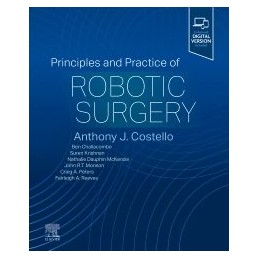- Reduced price

Order to parcel locker

easy pay


 Delivery policy
Delivery policy
Choose Paczkomat Inpost, Orlen Paczka, DHL, DPD or Poczta Polska. Click for more details
 Security policy
Security policy
Pay with a quick bank transfer, payment card or cash on delivery. Click for more details
 Return policy
Return policy
If you are a consumer, you can return the goods within 14 days. Click for more details
Data sheet
?General principles
Physiology of pneumoperitoneum
Complications
Air embolism
Arrest. etc
Preoperative assessment and patient selection
Patient positioning and prevention of injury
Bedside - including port placement and docking
Draping robot
(basic understanding in order to be able to deal with trouble shooting)
Need all 4 arms to be draped even if not using
Port placement
Establishing pneumoperitoneum
Hasson
Veress
Optical
Insufflation pressure
Complications and trouble shooting
Eg. Adhesions, Obesity, Narrow pelvis, Prior surgery or radiotherapy, Existing stoma
Docking the robot
Modelled on Device teaching
Targeting
Ensuring adequate space between arms
Burping
Safety
e.g. height limitation
Locking instruments to avoid drift
Emergency undocking
Trouble shooting errors and faults
Instruments
Familiarity with commonly used laparoscopic instruments for the bedside assistant
Inserting and exchanging instruments
Diathermy settings
Console
How does it all work?
Basic rundown of buttons etc
Controlling the camera
Use of different lenses and changing view
Understanding when/why to use different lens
Swapping between instruments
Fourth arm control
Clutching
Customising your setup
Ergonomics
Scaling ratio movement
Adjusts movement speed to surgeon preference
Default 3:1, 2:1, 1.5:1
Available instruments
Diathermy settings
